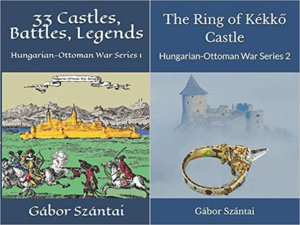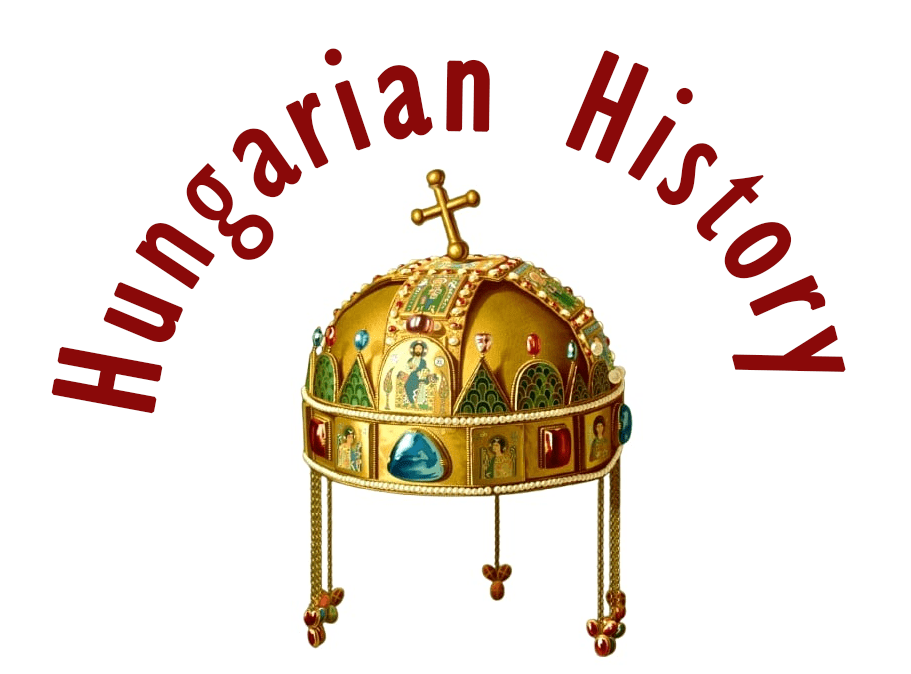
The real name of our King Károly Róbert (reigned: 1301-1342) was Caroberto de Anjou, but Hungarian historians have over time “Magyarised” his first name and arbitrarily identified him with the names Károly and Róbert (wrongly, by the way). He is credited with the elimination of the chaos and anarchy that emerged at the end of the Árpád era, the strengthening of the feudal Hungarian state from within and without, the restoration of respect for royal power and its real influence, and the economic recovery of the Kingdom of Hungary.

As the first Hungarian king with French roots and a descendant of both the Capeting and Anjou dynasties, he was able to take the Hungarian throne with external help and support, albeit at the cost of serious struggles. However, at the end of his 40-year reign, he passed away, leaving a strong, wealthy state to his son, Lajos the Great.

Regarding the origins of King Károly Róbert, it is important to point out that his great-grandfather, Charles of Anjou, was in fact the younger son of King Louis VIII of France. The eldest son, Louis IX, took the French throne in 1226. The branch that had ‘fallen’ from the throne was compensated with the Anjou dynasty. The Anjou family soon became the most important and influential aristocrats in Europe, especially after they had gained the Kingdom of Naples, where they established themselves and from where they came to our country, with the help of Pope Urban IV.

The Árpád ancestry of Károly Róbert
The father of Károly Róbert was Charles Martell, and his mother was Clemencia of Habsburg. His father was related to the House of Árpád through his parents, as his paternal grandmother was Mary, the daughter of King István V. The last ruler of the House of Árpád was András III (1290-1301), but his power was questioned by many at home and abroad, as some members of the Hungarian nobility believed that he was not a descendant of the House of Árpád.

The rumour was based on the fact that before the birth of his father, the posthumous István, András II and his third wife, Estei Beatrix, had not been married, but the young Italian queen had an intimate relationship with the country’s reigning Palatine, Dénes. Thus, after the death of András II, István – the father of András III – was born abroad, perhaps as the child of Palatine Dénes, and not of András II.

The acquisition of the Hungarian throne
Foreign pretenders to the throne appeared in Hungary even before the death of András III. As early as 6 January 1292, Queen Mary gave Hungary to her son Charles Martel and proclaimed him King of Hungary. Charles Martel died in 1295. The claim to the throne of Hungary by the Anjous of Naples was thus passed to his son, Károly Róbert. This claim was helped by the fact that in 1294 the Pope was Boniface VIII, a prominent but late fighter for papal world domination, who would have been keen to see his Neapolitan vassals on the throne of Hungary.

After lengthy preparations and after having once again bestowed his favours and grants on the southern lords loyal to him, King Charles II of Naples sent his grandson, the barely twelve-year-old Károly Róbert, to Hungary, arriving on the Dalmatian coast in August 1300. While the young Anjou was marching with his army towards the country’s capital, on 14 January 1301, András III died in Buda Castle, and with him the Árpáds’ line of kings became extinct.

On the news of the death of András III, Károly Róbert was hurriedly taken to Esztergom by his patrons, and there, the Anjou’s quartermaster in Hungary, the elected Archbishop of Esztergom, Bicskei Gergely, crowned him with another crown, perhaps hastily made for the occasion, in the absence of the crown of “Saint István” ( attributed to Saint Stephen ). The thirteen-year-old youth was supported by only a few ecclesiastical and secular dignitaries in Hungary at the time: the Subics and Babonics families of Croatia, as well as the provincial lord Csák Ugrin and Archbishop Bicskei Gergely of Esztergom. Foreign supporters included the viceroy of the Kingdom of Naples, Pope Boniface VIII, and the Habsburg princes.

However, in opposition to Károly Róbert, several of the country’s authorities – the Rátót clan, Balázs clan, Kőszeg clan, the Archbishop of Kalocsa, the bishops of Eger, Várad, Vác, Csanád, Bosnia, and Szepes Region, Csák Máté of Trencsén, Aba Amádé, the judge of Buda – went to Bohemia to ask the nine-year-old son of the Bohemian king, Wenceslas, to take the Hungarian throne. Wenceslas had a proven family connection to the House of Árpád, as he was the great-grandson of Béla III’s daughter Constance.
The young Wenceslas was brought to Hungary, and on 27 August 1301, Archbishop János of Kalocsa crowned him king with the “Saint István” crown in Székesfehérvár. In response, Károly Róbert gathered the faithful and besieged the king’s seat, Buda, in 1303. Wenceslas inherited the Bohemian throne a few years later, in the autumn of 1305, after his father’s death, and was forced to officially renounce Hungary and the title of King of Hungary.

After the departure of Wenceslas, on 10 October 1307, Károly Róbert was elected king by the Diet of Rákos. The third foreign pretender to the throne, Prince Otto of Bavaria, Wittelsbach, emerged afterwards. Otto was also a descendant of the House of Árpád, as he was the son of Béla IV’s daughter Erzsébet, the grandchild of the ‘famous’ Hungarian monarch. The German prince wanted to ally himself with the lord of Transylvania, Kán László, to gain the Hungarian throne, but the voivode took the sacred crown from him, which Otto had received from Wenceslas. In 1308, lacking supporters, Otto left the country, and on 15 June 1309, and then on 27 August 1310, with the crown recovered from Kán László, the coronation of Károly Róbert took place for the third time in the ancient seat of the Árpáds, in Fehérvár.

Consolidation of power
Although most of the lords sided with the new King, the stronger ones resisted. Although Csák Máté, together with Kőszegi Henrik, recognised the king in 1308 as the largest and most powerful landowners in the country, they ruled as kings in their territories. Aba Amadé’s death in Kassa gave the king his first major victory, for he sided with the city against Amadé’s sons. They had allied with Csák Máté, but the combined army was defeated by Károly at the Battle of Rozgony on 15 June 1312. In 1316, he defeated the Kőszegi clan, and in 1317, Borsa Kopasz and Kán László, and gradually took control of the whole country.

After the Battle of Rozgony, the power of Csák Máté was weakened, but still strong enough for the king to be wary of him. He took Visegrád from him in 1316 and Komárom in 1318, but the north-western part of the country came under the control of Károly Róbert only after the death of the lord in 1321. Finally, in 1322, the royal seat, which had until then been held in Temesvár out of necessity, was transferred to Visegrád.

The last armed confrontation was that of Zách Felicián, a confidant of Csák Máté, who attempted to assassinate the Anjou monarch on 17 April 1330. The reprisal for the assassination was a warning to the other lords, as pieces of Felicián’s body were sent to various cities, his head to Buda as a warning. Her children were executed, her daughter Klára was mutilated and dragged from town to town, and she was forced to cry out, “So shall he who is unfaithful to the king!” Felician’s relatives were also sentenced to death for three generations, and his more distant relatives were condemned to the loss of their property.

The centralisation policy
The centralising policy of King Károly Róbert: He put the royal power, which had been shaken under the last Árpáds, on a new footing and consolidated it. He replaced the old, rebellious nobility with new men loyal to him and divided the confiscated estates among them. Typically, he brought into power the hitherto marginalised branches of ancient families.
Many families that later played an important role in Hungarian history, such as the Lackfiaks, the Garais, the Nekcseys, the Szécsényis, or the Debrecenis, rose to power during this period. He reclaimed 100 of the royal castles and then donated them again, but only to nobles loyal to him, who received them only as service estates, so-called honorary estates, for the duration of their service, i.e,. for the time they held office.

Under his rule, not only 60 (20%) but 160 (50%) of the 300 castles in the country were in royal hands. The great honours of the country barons were typically rotated among the greatest overlords. The honour was the real power, as it sometimes meant the possession of 10-20 castles. The honours were controlled by their holders through their own families. The king’s power was also increased by the creation of a new form of army, which included the royal band, the county band, and the Kun (Cuman) light cavalry.

The economic policies of Károly Róbert
In terms of finance, King Károly Róbert also strengthened the royal power and replenished the treasury. His chief confidant, the treasurer Nekcsei Demeter, helped him in this task. First of all, as Hungary was one of Europe’s leading gold and silver deposits at the time, he placed precious metal mining and trade under close royal control. He reformed the system of mining royalties (urbura). Whereas under the Árpáds the king had received one-tenth of the gold and one-eighth of the silver mined, Róbert shared one-third of the royalties with the landlords to encourage the exploration of new mines.
He forbade the transport of precious ore abroad; the gold and silver had to be supplied at a price set by the monarch (precious metal monopoly) to the newly created minting chambers, which minted it. The guiding principle of his policy was to replenish the royal treasury. There are three main elements to this:
- Urbura or mining fee
- Gate tax
- A Thirty tithe
In 1323, instead of the many types of money in circulation, the silver denarius of constant value was minted, and in 1325, the gold forint was introduced, following the Florentine model, and the silver gharas became the currency of exchange. (The fact that Károly Róbert was the first ruler of the continent to be allowed to mint gold currency in his country is an indication of Hungary’s leadership in gold mining in Europe. ) The coinage favoured by earlier rulers, known as the ‘chamber’s profit’, which involved the periodic compulsory exchange of coins for lower-precious-metal coins, was abolished by King Károly Róbert.

He also increased the royal revenues by introducing a new tax, the gate tax. A gate tax was levied on any property whose gate a loaded hay wagon could enter and turn around (hence the name gate tax). They also introduced the thirty tithe, which was levied on goods exported to the west and north, and the twenty tithe, which was levied on goods exported or imported to the south. Customs duties were collected not only at borders but also at major towns. Such were Székesfehérvár and Buda.

The foreign policy of Károly Róbert
After consolidating the country’s internal relations, the king began to restore its external prestige. First, he settled the succession dispute with King Robert the Wise of Naples. In a 1333 treaty, brokered by the Pope, he betrothed his youngest son, Prince Endre, to the grandson and heir of the Napoleonic monarch, Johanna, and stipulated that the couple would inherit the throne jointly.

He also pursued a successful expansionist policy in the Balkans and conquered Nándorfehérvár (Belgrad) and Galambóc (Golubac) from the Serbs. (Nándorfehérvár was a Byzantine possession from 1018, and until 1230 it was in Hungarian and Byzantine hands. Then it briefly fell into Bulgarian hands, and around 1272, István V, together with his daughter Katalin, gave the castle as a dowry to the Serbian ruler Dragutin. After that, it was mostly in Hungarian hands until 1403, when King Zsigmond handed it over as a fiefdom to his Serbian despot Istvan Lazarevich.)

It was also a success in foreign policy for Károly Róbert, notably the organization of the Visegrád meeting in 1335. The Polish, Bohemian and Hungarian rulers (Casimir the Great, John of Luxembourg and Károly Róbert) agreed on a trade route around Vienna (to avoid the Vienna customs), settled the Polish- Bohemian dispute over Silesia (Casimir gave up the territory in exchange for John’s claim to the Polish throne) and reached a third agreement: if the Polish king Casimir died without a son, the throne would go to the son of Károly Róbert. In this way, he secured a kingdom for each of his sons: for his younger son, the kingdom of Anjou in Italy, by the aforementioned Naples deal, and for his elder son, Lajos, the kingdom of Poland, alongside Hungary.

Almost the only foreign policy failure of King Károly Róbert was related to Wallachia. The area had previously been made up of the Wallachian and Kun kenases, loyal to the Hungarian kings, but in 1310 a voivode named John of Basarab emerged and united the small kenases to create the principality of Wallachia, independent of the Hungarians. In October 1330, Károly Róbert conquered Argyasudvarhely, the seat of the disobedient Wallachian voivode, but on 9 November, on his way home, he was attacked by the voivode’s troops in a narrow mountain pass and defeated at the Battle of Posada. Károly Róbert was forced to recognise Wallachia.

Regarding his marriages, his first two wives were named Mary, so their names were often confused in the sources, as noted by Kristó Gyula. His first wife was Maria Piast, the daughter of Prince Casimir II of Beuten in Silesia, while his second wife was Maria Rurik, the daughter of King Leo I of Halych. After the death of his third wife, Beatrix of Luxembourg, he married the daughter of the Polish king, Elizabeth of Lokietek, in 1320, which later gave his son Lajos the legal basis for the Polish throne. On the death of Károly Róbert in 1342, he left a powerful empire to his son, Lajos the Great.

Source: Harmat Árpád Péter http://tortenelemcikkek.hu/node/226
Dear Readers, I can only make this content available through small donations or by selling my books or T-shirts.
Please, support me with a coffee here: https://www.buymeacoffee.com/duhoxoxa
You can check out my books on Amazon or Draft2Digital. They are available in hardcover, paperback, or ebook:
https://www.amazon.com/dp/198020490X or at https://books2read.com/b/boYd81

My work can also be followed and supported on Patreon: Become a Patron!http://Become a Patron!
Become a Patron! Donations can be sent by PayPal, too: https://tinyurl.com/yknsvbk7


https://hungarianottomanwars.myspreadshop.com/all
Subscribe to my newsletter here: https://tinyurl.com/4jdjbfkn

